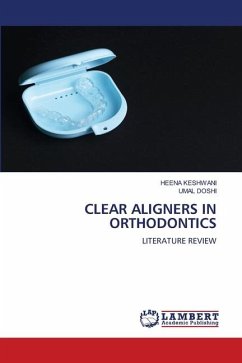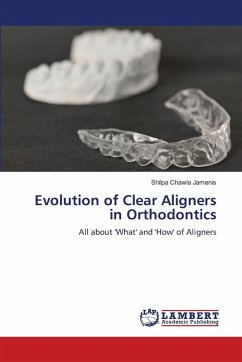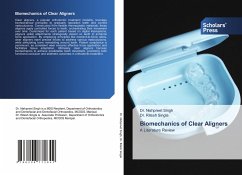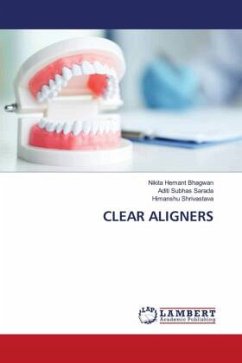
ACCURACY OF CLEAR ALIGNERS FOR INCISOR TORQUE IN ORTHODONTIC TREATMENT
A SYSTEMATIC REVIEW
Versandkostenfrei!
Versandfertig in 6-10 Tagen
29,99 €
inkl. MwSt.

PAYBACK Punkte
15 °P sammeln!
This systematic review aimed to evaluate the accuracy of clear aligners in achieving incisor torque during orthodontic treatment. A 10-year data search was conducted based on specific inclusion criteria, such as randomized control trials, cross-sectional studies, and FEM studies involving patients undergoing aligner treatment. Out of 291 studies, 8 met the inclusion criteria and were included in the review.The review found that clear aligner accuracy in achieving programmed incisor torque varied, with average success rates as low as 41%. Power ridges and attachments emerged as essential tools,...
This systematic review aimed to evaluate the accuracy of clear aligners in achieving incisor torque during orthodontic treatment. A 10-year data search was conducted based on specific inclusion criteria, such as randomized control trials, cross-sectional studies, and FEM studies involving patients undergoing aligner treatment. Out of 291 studies, 8 met the inclusion criteria and were included in the review.The review found that clear aligner accuracy in achieving programmed incisor torque varied, with average success rates as low as 41%. Power ridges and attachments emerged as essential tools, improving torque control but requiring over-correction to counteract torque loss. The findings highlight the need for further research and optimization to enhance clear aligner performance in orthodontic treatments.














